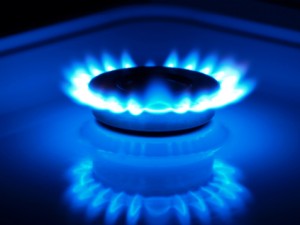 Natural gas fell for a second day on Tuesday as weather conditions across the US remained on track to significantly improve starting March 10th, spurring bearish longer-term weather sentiment.
Natural gas fell for a second day on Tuesday as weather conditions across the US remained on track to significantly improve starting March 10th, spurring bearish longer-term weather sentiment.
Natural gas for delivery in April fell 1.15% to $2.667 per million British thermal units by 12:34 GMT, shifting in a daily range of $2.681-$2.641. The contract slid 1.3% on Monday to $2.698, extending the previous weeks more than 8% decline.
According to NatGasWeather.com, natural gas demand in the US will be very high through Friday, before easing to high through March 9th.
Milder temperatures will spread over the Southeast and northward along the Atlantic coast the next few days, bringing readings above the usual, while the last in a series of Arctic outbreaks sweeps across the central US today. It will push deep into the South tomorrow and reach the Northeast by Thursday, pushing overnight lows across the northern US into the single digits and below zero and inducing very strong heating demand. Temperatures of 15-35 degrees below usual will once again cover the central and eastern regions, but this cold blast will likely be the last of its kind for the winter heating season, paving the way for bearish weather sentiment after it retreats on Friday into Saturday.
The western US will see weather systems with rain and snow depart today, giving way to warmer and drier conditions through the weekend. Early next week, the Northeast will remain cool, while high pressure strengthens over the central US.
As the week progresses, Canadian weather systems carrying rain, snow and below-average temperatures will track across the northeastern US, NatGasWeather.com said, but temperatures across the eastern and central regions will rise to near or above the normal as high pressure strengthens, significantly curbing national heating demand. While the West remains warm and dry early in the week, Pacific weather systems arriving in the next days will bring showers and cooler readings.
Temperatures
According to AccuWeather.com, readings in New York on March 5th will range between 16 and 29 degrees Fahrenheit, compared to the average 32-46, before jumping to the near-seasonal 34-43 three days later. The mercury in Chicago will range between 5 and 16 degrees on March 5th, compared to the normal 27-42, and will remain below usual over the following four days before jumping to as much as 49 degrees on March 10th.
Down South, highs in Houston will reach 74 degrees tomorrow, 4 above normal, but will ease to 48-51 degrees on March 5-7th, before recovering to near-seasonal as of March 9th. On the West Coast, Los Angeles will range between 52 and 76 degrees on March 4th, compared to the average 50-70, with warmer-than-usual weather set to firmly persist through March 12th.
Supplies
The Energy Information Administration reported on Thursday that US natural gas stockpiles fell by 219 billion cubic feet in the seven days through February 20th, compared to the five-year average drop of 131 bcf, turning surpluses back into deficits. Total gas held in US storage amounted to 1.938 trillion cubic feet, 1.5% below the five-year average inventory level of 1.968 trillion, compared to a 2.8% surplus a week earlier.
This week’s report is projected to show another 200+ bcf storage withdrawal as last week’s cold blasts across the majority of the US are taken into account, bringing deficits to 100-150 bcf. Stockpiles slid by 144 billion cubic feet during the comparable period a year ago.
Moreover, this week’s Arctic outbreak will result in one last inventory drop well above the average, to be reflected in EIA’s March 12th report. The five-year average inventory decline for the week ending March 6th is 116 bcf, while stockpiles fell by 189 bcf a year ago. However, next week’s expected thaw, which will be factored in March 19th’s inventory report, will end the recent string of larger-than-average withdrawals, setting up fairly bearish headwinds in the longer-term.
Pivot points
According to Binary Tribune’s daily analysis, April natural gas futures’ central pivot point stands at $2.700. In case the contract penetrates the first resistance level at $2.751 per million British thermal units, it will encounter next resistance $2.803. If breached, upside movement may attempt to advance to $2.854 per mBtu.
If the energy source drops below its first support level at $2.648 per mBtu, it will next see support at $2.597. If the second key support zone is breached, the power-station fuel’s downward movement may extend to $2.545 per mBtu.
In weekly terms, the central pivot point is at $2.821. The three key resistance levels are as follows: R1 – $2.958, R2 – $3.182, R3 – $3.319. The three key support levels are: S1 – $2.597, S2 – $2.460, S3 – $2.236.





